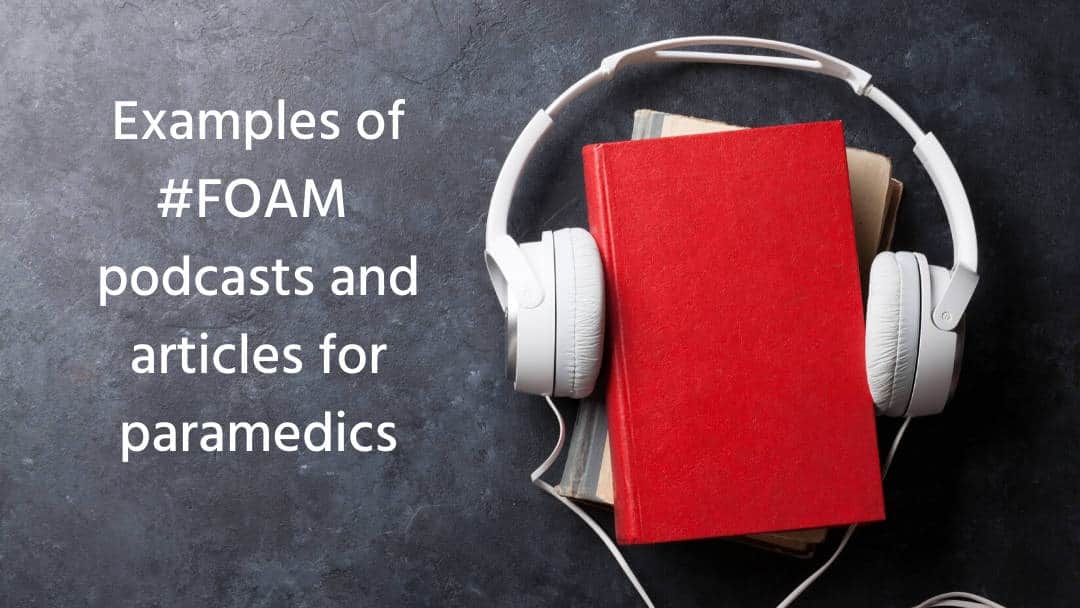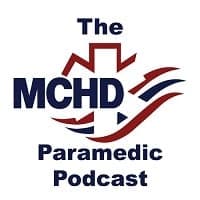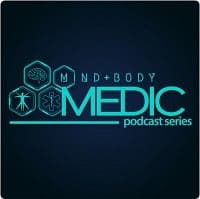
Dan Limmer, BS, NRP

by Limmer Education
Our articles are read by an automated voice. We offer the option to listen to our articles as soon as they are published to enhance accessibility. Issues? Please let us know using the contact form.
If you haven’t heard of FOAM (Free Open Access Medical Education), you’ve likely seen some of the material in podcasts, blogs, and tweets. While there is a #FOAM category for many medical specialties (and EMS), some feel the material can be a bit over the head of the paramedic student.
I disagree with that concept—both in practice and in theory. While some material written by physicians, for physicians is out of the scope of a paramedic, the benefits of getting current clinical information and expanding the student’s reach past the textbook and classroom more than overcome any material out of the EMS realm. I’ll provide four sources as examples.


Vaping Associated Pulmonary Illness – What You Need to Know
In addition to taking less than a minute to read this article, paramedic students can learn several things. These include putting acute lung injury from vaping into their differentials, the need to bring any vaping cartridges to the hospital, and additional resources to learn from (CDC and FDA bulletins). Bottom line: This is a rare but critical condition. 1/3 of the patients with vaping-related lung conditions have required intubation. This post provides reliable, relevant information for your students.

Syncope in PE – More Evidence for a Lower Prevalence, from Journal Spoon Feed
I included this post because it was decidedly more physician-based but still had relevance. Your students learn about PE, but a quick read puts it into context. Often, we talk about when a condition exists, but we’re not as likely to talk about when it DOESN’T exist. This article is a quick read that also shows how physicians think. Students may choose to click through to the references or look up Well’s Criteria for PE (which may be the most significant take-home info).

Episode 46 – Back to the Basics – COPD Part 1, from MCHD Paramedic Podcast
This podcast, which I consider #FOAM gold for paramedic students, is 24 minutes of insight that can be used as an out of class assignment (supporting a flipped classroom), remediation, or something for those students you can’t seem to satiate. Worried about the fact that the great dialogue briefly talks about someone else’s protocols? Don’t be. It’s good for students to see how others do it—and helps students realize that the NREMT can’t possibly use everyone’s protocols on the NRP exam. (Second choice: MCHD’s congestive heart failure series is 30 minutes of awesomeness.)

MBM Episode 20 – My Hands Shake, from Mind-Body Medic Podcast
This last example does a few things. It introduces one of the podcasts under the FlightbridgeED.com umbrella as well as the wealth of #FOAM available in the EMS critical care/flight realm. This also allows us to show that #FOAM is rounded and covers things like affective concepts. This podcast and the mind-body concept itself for EMS providers are vitally important as we discuss stress, suicide, and caregiver fatigue.

Bonus: Medic Mindset podcast
I would be remiss in this list for not mentioning one of my favorites, Ginger Locke’s Medic Mindset. I love her clinical discussions (syncope was one of my favorites) but never shy away from the variety of topics there. Our medics should be as well rounded as her podcasts.
I’m sure you have favorites. We would love to know what they are.

Dan Limmer, BS, NRP

Dan Limmer, BS, NRP
As these two conditions present so similarly in the field, and we lack alot of the diagnostic equipment in our ambulances....sorting out and differentiating these criteria can be critical! The use of ETCO2, both waveform and numerical can be very diagnostic. Understanding the A&P absolutely matters in treatment modalities! Use of Nitro and CPAP in addition to nebulized bronchodilators could make the difference between improving the conditions or making them worse! You can never have too much information and refresh your basic understanding! History taking and assessment are paramount! The hospitals are grateful when you do your job well and the patient is now better than you found them and the correct treatment modality had been initiated!